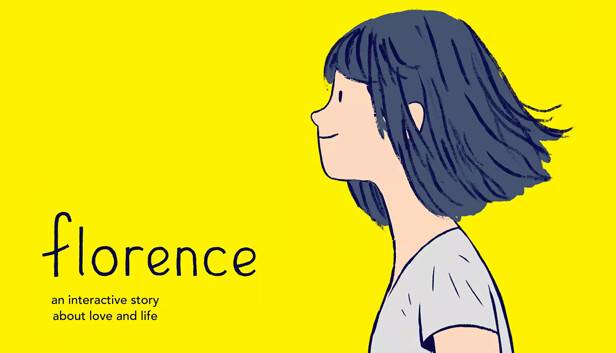For my Critical Play, I chose to play the game “Florence,” developed by the game studio Mountains and available on multiple platforms, including iOS which is where I played it. It is designed for a broad audience but especially for players who appreciate storytelling that explores personal development.
In “Florence,” the game’s innovative use of mechanics and aesthetics to explore the emotional and personal development of Florence Yeoh, an East Asian woman, represents a significant stride towards inclusivity by challenging the Eurocentric norms prevalent in mainstream gaming. However, while “Florence” effectively uses its platform to introduce players to intersectional feminist themes by portraying diverse identities and the everyday emotional labor inherent in women’s lives, it predominantly constrains Florence’s personal growth within the parameters of a romantic relationship.
As a feminist, what stood out to me first and foremost as I played the game was the fact that Florence is an East Asian character and Rishi is a South Asian character. The inclusion of these identities in leading roles of a video game is significant, as it challenges the often Eurocentric focus of mainstream games. By portraying characters of diverse backgrounds, the game implicitly argues that feminist narratives must include diverse voices and stories, taking on an intersectional feminist lens that moves beyond monolithic portrayals of race in media — in alignment with Chess’ argument that games need feminism to explore new and diverse experiences of women. That being said, while the game does provide an entry point by featuring these characters, it could deepen its intersectional approach by more explicitly addressing how these characters’ identities impact their lives and choices, particularly in the context of community pressures, familial expectations, personal identity struggles, and inter-racial relationship dynamics.
“Florence” employs various interactive mechanics. Specifically, in the game, conversations between characters are depicted as puzzles. Initially, these puzzles are simple, but as conflicts arise, the puzzles become more complex reflecting the challenges in communication between Rishi and Florence as their relationship progresses as well as the emotional labor required to sustain relationships — also in alignment with feminist principles.
Additionally, the game utilizes a minimalist soundtrack that mirrors the emotional states of the characters as well as the general evolution of the narrative. In moments of joy, soft, melodic tunes can be heard; in moments of conflict or sadness, more somber tones play. Similarly, colors shift to match the mood of the story; warm, bright hues represent love and happiness, while cooler, muted colors depict sadness. Combined, the sound and color palette enhance the narrative’s emotional impact, helping to communicate the characters’ inner worlds. But these too could incorporate elements from Florence and Krish’s cultural backgrounds to deepen the narrative’s cultural dimensions, providing a richer visual context to their intersectional identities.
Together, the mechanics and aesthetics of the game help to vividly portray the everyday experiences of women, focusing on personal and emotional labor. In this way, the narrative presents Florence’s experiences as political; in other words, by interacting with the puzzles, the sound, and the colors, we as players see firsthand how the personal — the inner world and experiences of Florence — is indeed the political.
However, a key critique I have is that while “Florence” uses its gameplay to explore the emotional landscape of Florence, it is important to note that it predominately frames her personal growth within the context of a romantic relationship, which can be viewed as a limitation from a feminist perspective. Expanding the narrative to allow Florence to pursue different life paths — such as focusing more on her career or hobbies or her female friendships (a game diving into this would be super cool!) — would help in portraying Florence as an active agent in her own life whose development doesn’t depend on this romantic lens.
Similarly, the narrative could benefit from having a broader range of characters. While I understand this might muddle the gameplay as it stands currently, I do believe including friendships and professional relationships, among others, would diversify the portrayal of women’s experiences.
Discussion Question:
Considering the role of intersectional feminism in narrative-driven games, how can game designers effectively incorporate intersectional identities and experiences to create more inclusive and representative gaming environments?



